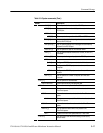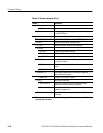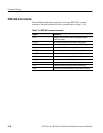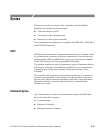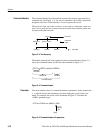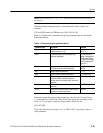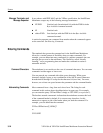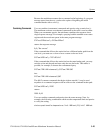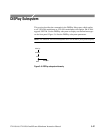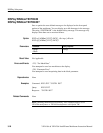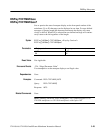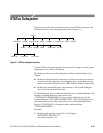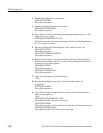
Syntax
VX1410A & VX1420A IntelliFrame Mainframe Instruction Manual
3–25
Because the mainframe assumes that a command at the beginning of a program
message starts from the root, you have the option of beginning the initial
command header with a colon (:).
You can combine (concatenate) commands and queries using a semicolon (;).
The mainframe executes concatenated commands in the order it receives them.
When you concatenate queries, the mainframe combines the responses into a
single response message. For example, querying both the standard event status
register and the error/event queue in the same program message
STATus:OPERation?;:SYSTem:ERRor?
returns the response message
0;0,"No errors"
If the command that follows the semicolon has a different header path from the
root level, you must use a colon to force a return to the root level:
SYSTem:VERSion?;:TEST:RESult?
If the command that follows the semicolon has the same header path, you may
omit the colon and the path and state only the new leaf node. This makes it
possible, for example, to shorten the concatenated query
SYSTem:TIME:LMAintenance?;:SYSTem:TIME:ON?
into
SYSTem:TIME:LMAintenance?;ON?
The 488.2 common commands that begin with an asterisk (*) may be used
anywhere in a command sequence with no effect on the command header path.
SYSTem:VERSion?;*ESR?
returns
1995.0;16
You can combine commands and queries into the same message. Note, for
example, the following combination which sets the temperature limit and queries
to verify the setting
status:questionable:temperature:limit AMBient,25;limit? AMBient
Combining Commands



